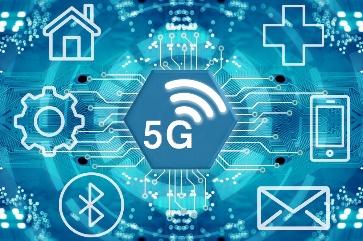
5G technology brings significant advancements in mobile communication, including higher data speeds, lower latency, and the ability to connect a vast number of devices.
However, its deployment also introduces various cybersecurity risks that organizations and individuals need to be aware of. Here are some key risks associated with 5G cybersecurity:








More Devices: The Internet of Things (IoT) ecosystem is expected to expand dramatically with 5G, resulting in more connected devices that can be targeted by cybercriminals.
Diverse Network Elements: The complexity of 5G networks means more components (e.g., base stations, small cells, edge computing) that can be exploited.
Supply Chain Risks: The use of multiple vendors and products from different countries can introduce vulnerabilities. Compromised components in the supply chain could lead to broader network vulnerabilities.
Software Exploits: The reliance on software-defined networking (SDN) and virtualization can create new opportunities for cyber attacks.
Misconfiguration Risks: 5G allows for network slicing, where multiple virtual networks can coexist on the same physical infrastructure. Misconfigurations can lead to unauthorized access between slices.
Security Isolation: Ensuring proper isolation and security between slices is crucial to prevent data leakage and unauthorized access.
Increased Data Collection: 5G networks are capable of collecting and transferring vast amounts of data, raising concerns about user privacy and potential misuse of personal information.
Interception Risks: Enhanced capabilities can allow for sophisticated interception of data in transit, including eavesdropping on communications.
Higher Bandwidth: The increased bandwidth available in 5G makes networks more susceptible to Distributed Denial of Service (DDoS) attacks, which can overwhelm services and disrupt operations.
Multi-Vector Attacks: Attackers can use a combination of IoT devices and application-layer attacks to create more impactful DDoS attacks.
Fragmented Security Standards: The rapid deployment of 5G has led to varying security standards across different regions and service providers, making it challenging to enforce consistent cybersecurity measures.
Regulatory Challenges: Governments and regulatory bodies may struggle to keep up with the evolving nature of 5G technology and its associated risks.
Access to Critical Infrastructure: Individuals with privileged access to 5G infrastructure can pose insider threats, either maliciously or unintentionally leading to vulnerabilities or data breaches.
5G and Legacy Networks: Interactions between 5G networks and legacy systems (like 4G and older technologies) can expose vulnerabilities that can be exploited by attackers.
Cross-Network Security: The seamless integration of various network types raises concerns over how to secure the interfaces and connections between them.
Comprehensive Security Frameworks: Organizations should adopt multi-layered security frameworks that encompass network, application, and device security.
Regular Security Audits: Routine assessments and audits of network infrastructure and connected devices can help identify and mitigate potential vulnerabilities early.
Training and Awareness: It’s essential to train employees and stakeholders about cybersecurity best practices, including recognizing phishing attempts and securing personal devices.
Collaboration: Working with industry partners, government agencies, and cybersecurity experts to stay updated on threats and best practices for securing 5G networks is crucial.
In summary, while 5G offers tremendous potential, its deployment must be accompanied by robust security measures to mitigate the risks associated with its use. Organizations must remain vigilant and proactive in their cybersecurity strategies to protect against the evolving threat landscape.


Leave a Reply